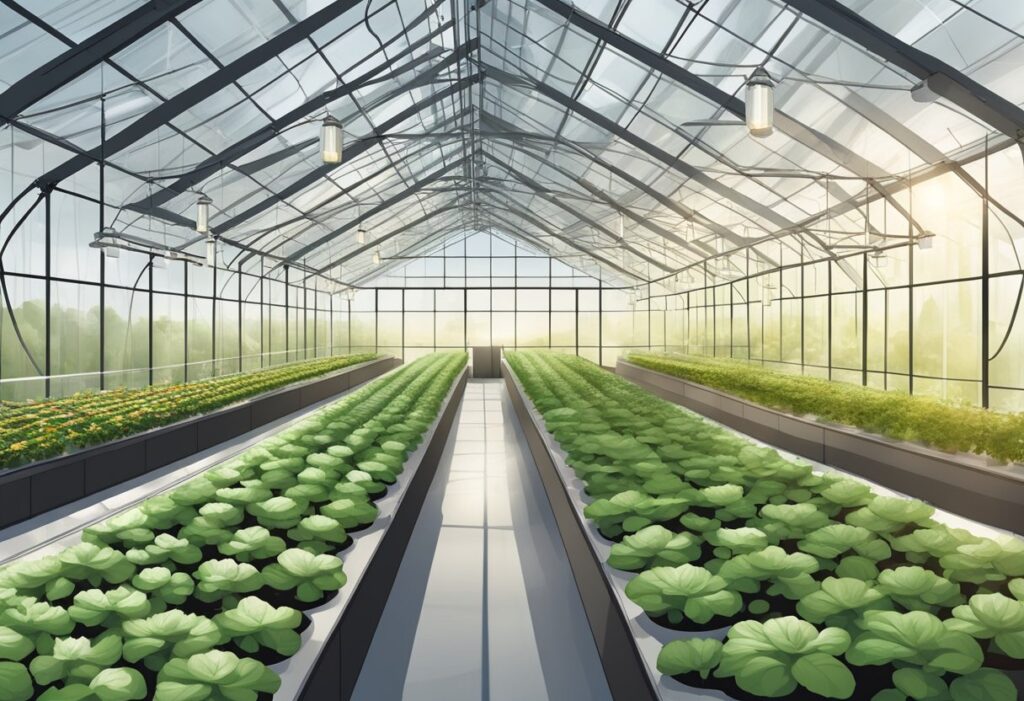
In the face of climate change, your approach to cultivating autoflower seeds in Canada must evolve. Adapting to fluctuating conditions ensures the resilience and sustainability of your cannabis crops.
Autoflowering cannabis strains are well-suited to Canada’s unique environment, withstanding less predictable weather patterns. To adapt to this, you should consider:
Climate variables such as temperature, precipitation, and extreme weather events are key factors influencing growth cycles. Here’s what to watch for:
Mitigating the effects of climate change on your autoflower cultivation in Canada involves careful monitoring and proactive adaptation strategies. By understanding the unique challenges posed by Canada’s changing climate, you can take concrete steps to protect your autoflower crops, ensuring a robust and sustainable yield.

As climate change presents new challenges for agriculture, your approach to cultivating autoflower seeds in Canada must evolve. Strategic actions can help mitigate risks and bolster the resilience of crops against unpredictable weather patterns and environmental stressors.
In Canada, the incorporation of innovative agricultural practices is vital for sustaining the cultivation of autoflowers. You should consider the following strategies:
Research indicates that adapting to climate change involves an all-encompassing approach that spans from regional planning down to the specifics of individual crop management. The Canadian government supports initiatives that foster research and dissemination of information on climate resilience in agriculture.
Cutting-edge scientific advancements play a critical role in strengthening autoflower resilience:
By staying abreast of advancements in genetic research and RNAi, your business can effectively align with both innovation and sustainability, ensuring that natural resources are conserved and the health and well-being of your autoflower cultivation are maintained. Engaging with these scientific strategies is essential to drive forward-thinking decisions that could shape the future of autoflower industries in Canada.

Navigating the economic and regulatory landscape is essential for adapting autoflower cultivation to the changing climate in Canada. Your attention to government policies, potential investments, and meaningful engagement with communities can help mitigate risks and capitalize on opportunities.
Government of Canada initiatives, including the Natural Climate Solutions Fund, emphasize significant investments in agriculture and climate resilience. Through these funds, you might see direct support for adapting your autoflower seeds cultivation practices to changing weather patterns. The National Climate Change Adaptation Division is working on frameworks designed to bolster the economy by protecting critical agriculture and agri-food sectors.
These government actions aim to provide a stable economic environment, reducing the impact of natural disasters and promoting sustainability in provinces and territories across Canada.
Engagement with Indigenous peoples and local communities is a cornerstone of advancing public health and agricultural innovations. The Government of Canada promotes this involvement by:
Through this engagement, adaptive strategies are developed that respect local customs and contribute to the broader national adaptation strategy, ensuring your cultivation methods are both effective and inclusive.
Your autoflowering cannabis is sensitive to temperature fluctuations. Ideally, you want to maintain a range between 70-85°F (21-29°C). Temperatures outside this range can slow down vegetative growth or flowering, potentially reducing your overall yield.
It’s crucial to monitor your watering schedule. Autoflowering cannabis does not require as much water as regular strains, so ensure you irrigate based on soil moisture levels and atmospheric conditions. Over-watering can lead to root issues, while under-watering in heat spells could stress your plants.
Opt for well-draining soil with a balanced pH level of 6.0-7.0. In climates prone to excessive rainfall, consider raised beds or pots to prevent waterlogging. Conversely, in drier regions, use moisture-retaining additives to reduce watering frequency.
Strains like Northern Lights, Royal Dwarf, and Amnesia Haze are known for their robust nature. When choosing autoflower seeds in Canada, look for varieties bred for resilience to temperature extremes and varying environmental conditions.
Adjust temperatures within the ideal range using climate control systems. Full-spectrum LED lights mimic natural sunlight and can be timed to optimize the light cycle for your autoflowers, while also saving energy. Indoor setups allow for a controlled environment, lessening the impact of outdoor climate variability.
We ship and deliver world wide via USPS and various couriers.
We offer a wide range of secure and anonymous online payment options.
We care about you, our customer. Please contact us with any questions or concerns.
Find out more about the benefits of being a loyal and regular customer.
WE ARE EVERY GROWERS ONE STOP SHOP TO ACQUIRE PREMIUM CANNABIS SEEDS FOR SALE IN THE USA, CANADA AND AUSTRALIA

Farmers Lab Seeds 2024, | All Right Reserved
Seeds are sold as novelty items, souvenirs, and collectibles. They contain 0% THC. We encourage our customers to check the legislation in their Country, State, Province, and Municipality prior to purchasing items from our store. We do not provide growing information.
All seeds are sold as hemp, and lab tested under 0.3% THC. This product is not for use by or sale to persons under the age of 21. This product should be used only as directed on the label. It should not be used if you are pregnant or nursing. Consult with a physician before use if you have a serious medical condition or use prescription medications. A Doctor’s advice should be sought before using this and any supplemental dietary product. All trademarks and copyrights are property of their respective owners and are not affiliated with nor do they endorse this product.
These statements have not been evaluated by the FDA. This product is not intended to diagnose, treat, cure or prevent any disease. Individual weight loss results will vary. By using this site, you agree to follow the Privacy Policy and all Terms & Conditions printed on this site. Void Where Prohibited by Law.